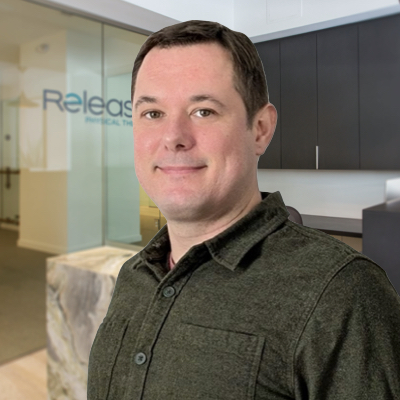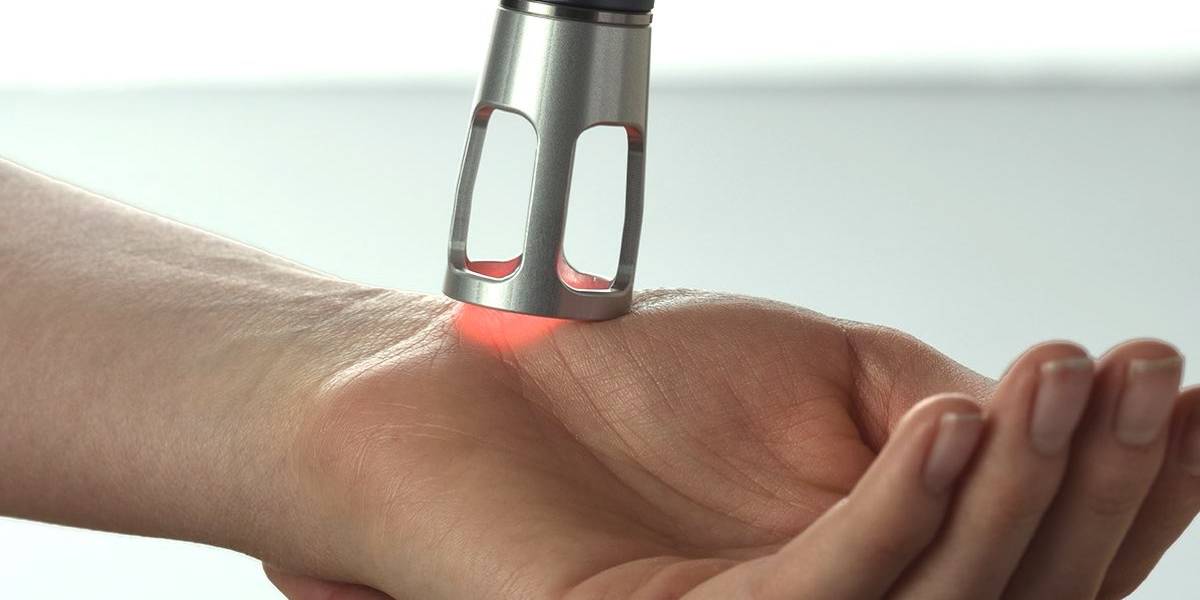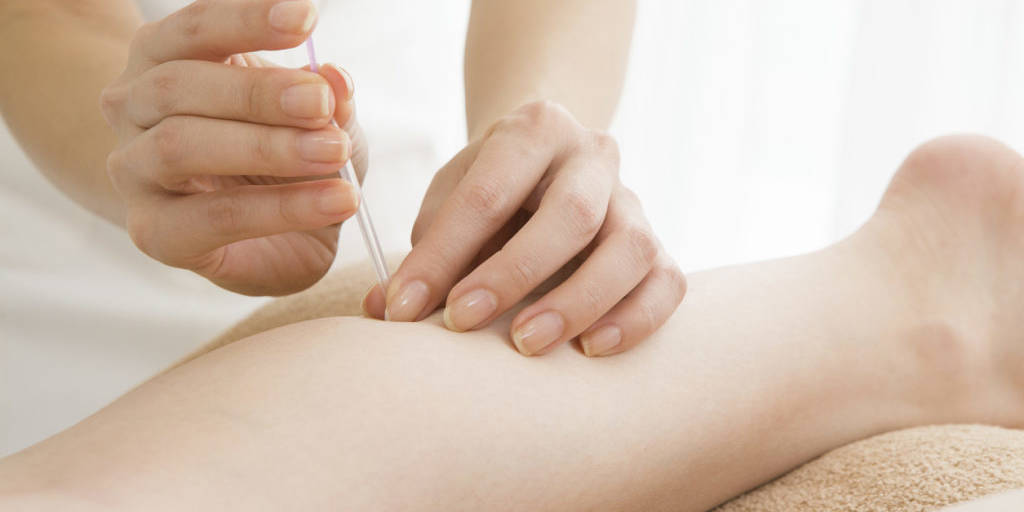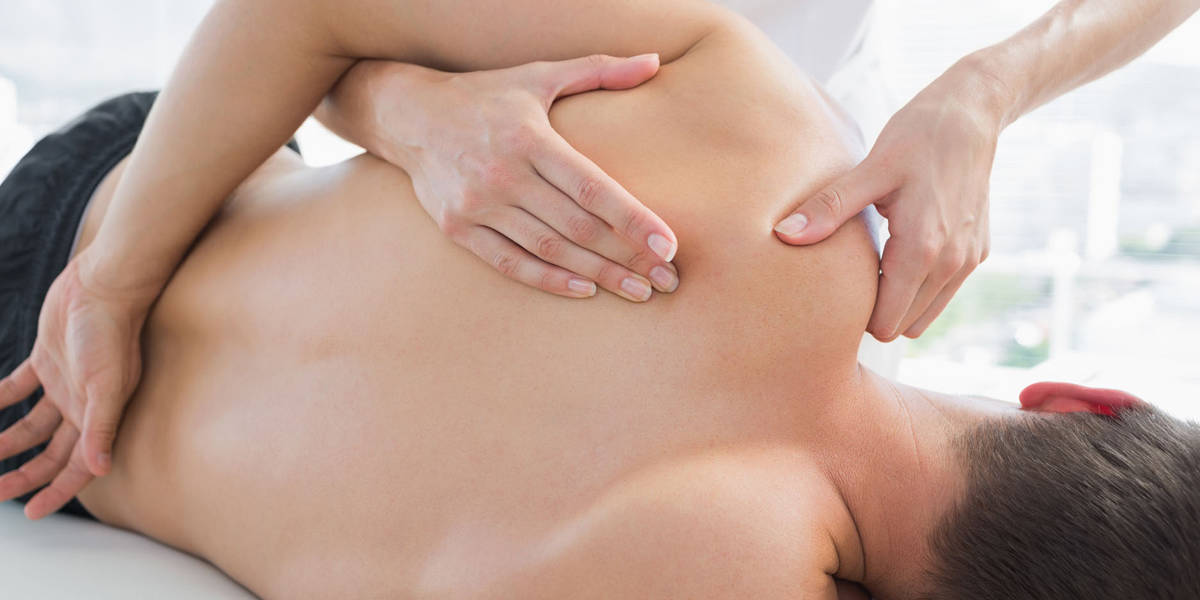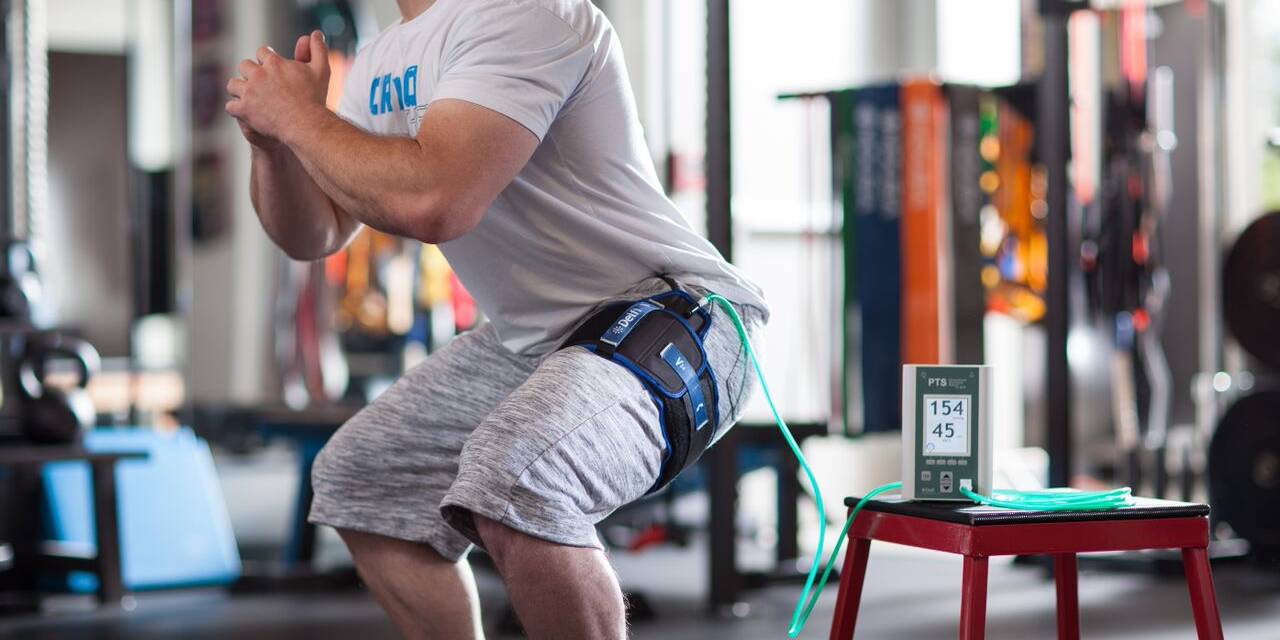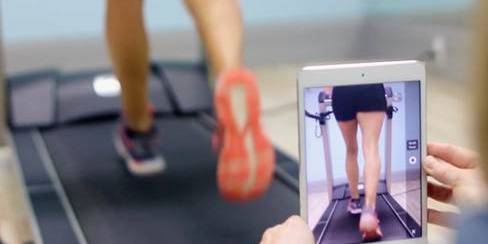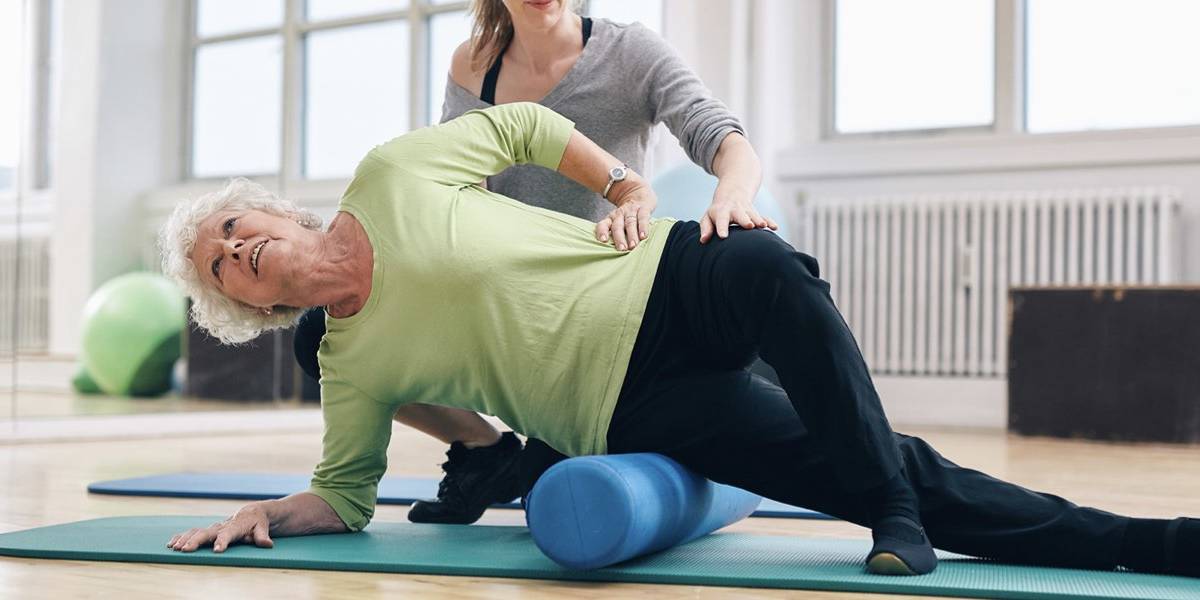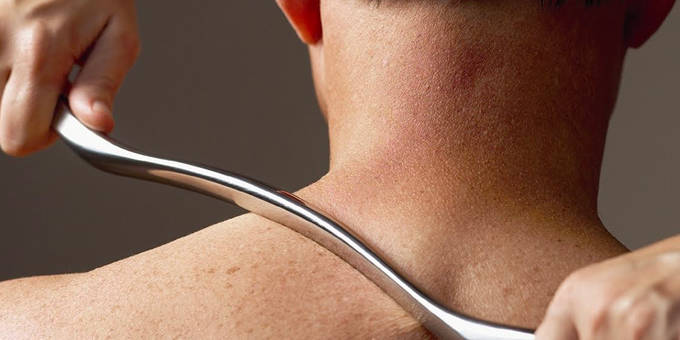Physical Therapy for Lower Back Pain in Washington, D.C.
Physical Therapy Treatment for Lower Back Pain
Can Physical Therapy Relieve Lower Back Pain?
Lower back pain is a common ailment that affects millions of people worldwide. At Release Physical Therapy 30 percent of our patient population is lower back pain. Lower back pain can be debilitating, affecting your ability to perform daily tasks, work, and sleep, and it can greatly affect your quality of life. The pain can be categorized into two main types: mechanical and derangement. Understanding these types of pain is the first step toward effective treatment, often involving physical therapy.
Mechanical Lower Back Pain
Mechanical lower back pain, also known as musculoskeletal or nonspecific lower back pain, is the most common type of back pain. It’s often caused by strain or injury to the muscles and ligaments in the back, such as from heavy lifting, poor posture, or sudden awkward movements. The pain is usually localized in the lower back and may be accompanied by muscle spasms or stiffness.
Derangement Lower Back Pain
Derangement lower back pain, on the other hand, is less common but can be more severe. This type of pain is caused by structural problems in the spine, such as a herniated disc, spinal stenosis, or degenerative disc disease. The pain can be constant or intermittent, and it may radiate to other parts of the body, such as the buttocks, legs, or feet.
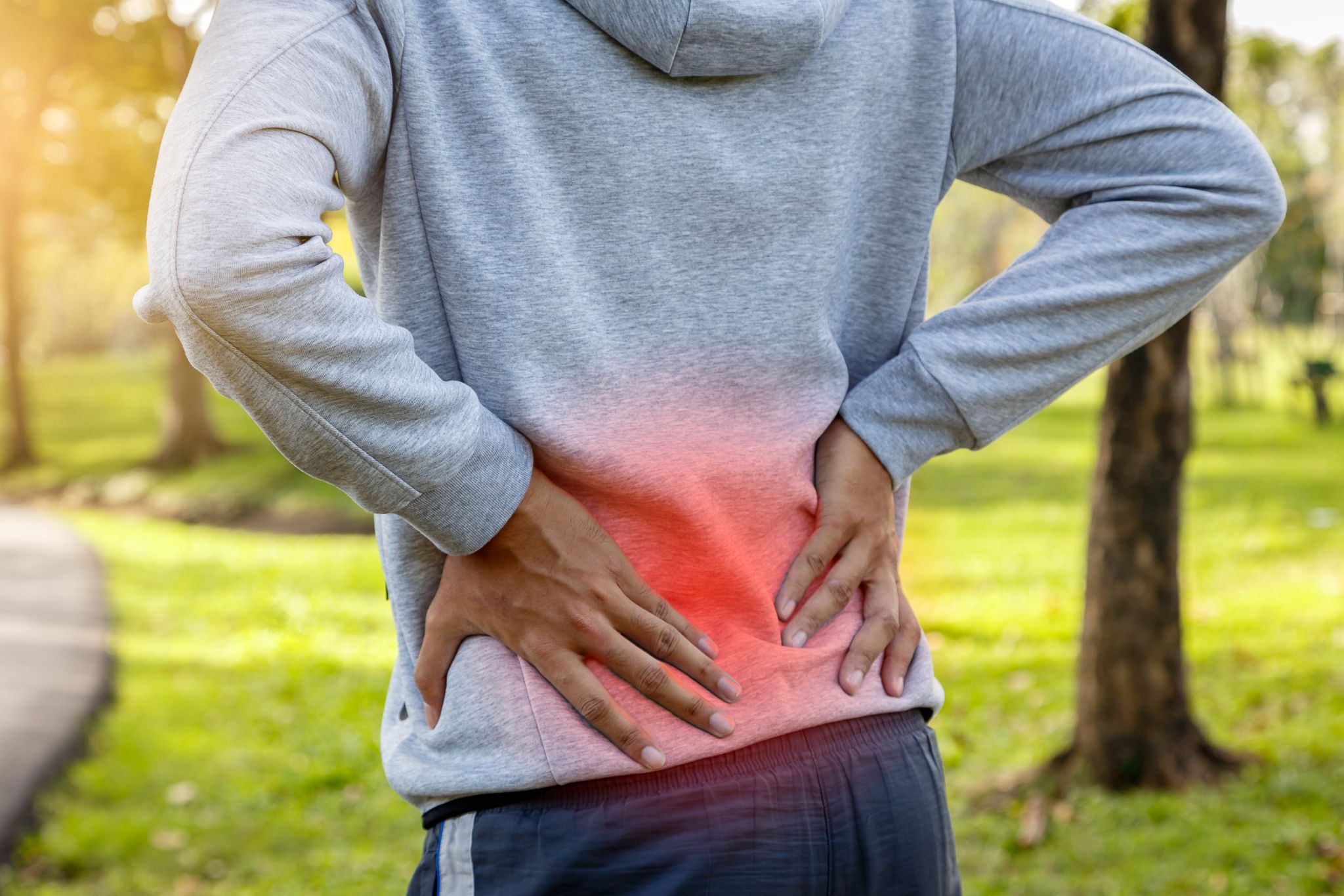
What is the best physical therapy for lower back pain?
Physical therapy is a proven and effective treatment for both mechanical and derangement lower back pain. It involves a series of treatments designed to relieve pain, improve mobility, and strengthen the muscles that support the spine. At Release Physical Therapy, we believe in a personalized approach to treatment. Each client is unique, and thus, every session is tailored to their specific needs, combining manual techniques and exercises. However, to provide a clearer understanding of our preferred treatments, we will further delineate them into categories for mechanical and derangement pain.
Lower Back Derangement Pain – Our favorite treatment is The McKenzie Method of Mechanical Diagnosis and Therapy (MDT) is a specialized physical therapy approach that is often used for treating derangement lower back pain. This method involves a series of exercises that aim to centralize or reduce the pain. The idea is to move the pain away from the extremities (like the legs) towards the back, where it is easier to manage. The McKenzie Method also emphasizes the importance of self-care and patient education. Patients are taught how to perform the exercises at home and how to adjust their postures and movements to prevent future episodes of back pain. This method has been shown to be particularly effective for patients with disc-related back pain.
Mechanical Lower Back Pain – Our favorite treatment is manual therapy. Manual therapy, including massage and dry needling, can be highly effective in treating lower back pain. Massage techniques, such as deep tissue and trigger point massage, work to relieve tension in the muscles and fascia, improving flexibility and reducing pain. They can also help to break up adhesions, promoting better circulation and healing. Dry needling, on the other hand, targets specific trigger points in the muscles, helping to release tightness and alleviate pain. This can also lead to improved muscle function and mobility. Overall, these manual therapy techniques can play a crucial role in managing lower back pain, enhancing the effectiveness of other treatments, and promoting a faster recovery.
How long does physical therapy take for lower back pain?
The duration of physical therapy for lower back pain can vary greatly depending on the severity of the pain, the underlying cause, and the individual’s overall health and fitness level. On average, a physical therapist might recommend 6 to 12 sessions over the course of 4 to 6 weeks for minor to moderate lower back pain. However, more chronic or severe conditions may require ongoing treatment over several months. It’s important to remember that everyone’s recovery timeline is different, and patience and consistency are key to achieving the best results. Regular home exercises and lifestyle modifications, as advised by the physical therapist, can also significantly speed up recovery and prevent future episodes of back pain.
Lower Back Pain FAQs
Physical therapy is often regarded as the most effective treatment for lower back pain due to its comprehensive approach. At Release Physical Therapy, we firmly believe in personalizing our sessions to each client. We understand that there is no one-size-fits-all treatment, hence our therapists design individualized treatment plans based on the patient’s specific symptoms, pain levels, mobility issues, and overall health. This personalized approach ensures that the therapy addresses the root cause of the pain, rather than just managing the symptoms. Furthermore, we take a holistic approach to treatment. We do not just focus on the site of the pain but also address other factors that may be contributing to the pain, such as poor posture, muscle imbalances, and lifestyle habits. We aim to provide long-term relief from pain by addressing its underlying causes. Our treatment includes exercises and stretches that strengthen the back muscles, improve flexibility, and enhance posture, all of which help prevent future episodes of back pain.
Determining the root cause of lower back pain can be complex, as both muscle and disc issues can present similar symptoms. However, there are certain characteristics that can help differentiate between the two.
Muscle-related back pain is often localized and can intensify with specific movements or activities. It can also cause referred pain in different areas due to trigger points, which are tight knots of muscle fibers that can form in muscles under stress. Our therapists are trained to identify referral patterns so they will be able to determine if your symptoms are coming from referred pain from trigger points.
Disc-related back pain, on the other hand, can also intensify with certain movements, particularly those involving bending or twisting. This type of pain often radiates down the legs and may be accompanied by numbness or tingling.
At Release Physical Therapy, our skilled therapists conduct a comprehensive evaluation to determine the source of your pain. Our therapists will accurately diagnose the cause of your pain and develop a personalized treatment plan that addresses your specific needs. Our goal is not only to relieve your pain but also to prevent it from recurring in the future.
The types of exercises to avoid with lower back pain can vary greatly depending on the individual’s specific condition and symptoms. However, there are some general guidelines that can be helpful.
- High-impact exercises: Activities that involve a lot of jumping or running can put a lot of stress on the lower back and exacerbate pain.
- Heavy weightlifting: Lifting heavy weights, especially without proper form, can strain the lower back.
- Twisting movements: Exercises that involve a lot of twisting of the spine, such as certain types of yoga poses, and tennis and golf swings, can potentially worsen lower back symptoms.
It’s important to note that while these exercises may need to be avoided during acute episodes of lower back pain, they may not necessarily need to be avoided forever. Once the pain has subsided, and with proper guidance and modifications, many people can reintroduce these activities into their routine gradually.
At Release Physical Therapy, we can provide you with a personalized exercise program that takes into account your specific condition, symptoms, and fitness level. We can also teach you how to perform exercises correctly and safely to avoid exacerbating your lower back pain. Our goal at Release Physical Therapy is to get you back to doing what you want to do.
Physical therapy can effectively alleviate symptoms of lower back pain as well as numbness and tingling, and help you return to the activities you love. At Release Physical Therapy, we employ a range of techniques to treat lower back pain, including McKenzie Mechanical Diagnosis and Therapy (MDT), Posture and Ergonomic assessments, Graston Technique, Trigger Point Dry Needling, Active Release Techniques (ART), laser therapy, functional training, therapeutic exercises, and other specialized treatments. At Release, our physical therapists work closely with each patient, providing one-on-one attention to develop a personalized care and treatment plan.
The most effective exercises for physical therapy are determined by the nature of the injury and the specific needs and conditions of the patient. At Release Physical Therapy, each treatment is individualized to the client’s specific needs. However, as a general guideline, here’s what we typically recommend:
Derangement Lower Back Pain
- Disc-related issues: For conditions related to disc problems, we utilize the McKenzie Method of Mechanical Diagnosis and Therapy (MDT) approach, which involves a series of repetitive movements to centralize or reduce pain and restore range of motion. This is followed by exercises aimed at improving core and hip stability, which can help support the spine and prevent future episodes of back pain.
- Stenosis: For patients with stenosis, we focus on flexion-based exercises, which can help open up the spinal canal and relieve pressure on the nerves. We also incorporate core stability exercises to strengthen the muscles that support the spine.
Mechanical Lower Back Pain
- Muscle strain: For patients who have experienced a muscle strain, we focus on deep core stability exercises some of our favorites are fall outs, fall outs with Theraband, marching, marching with Theraband, heel slides, heel slides with Theraband, bird dog, as well as hip stability exercises to strengthen the muscles and prevent further injury. We also incorporate mobility work to improve flexibility and range of motion.Check out the videos we’ve created to see how to perform all of these different exercises.
At Release Physical Therapy, we believe in the importance of movement for managing lower back pain. While rest is important in the acute phase of an injury, prolonged inactivity can often exacerbate back pain and lead to further issues such as muscle weakness and stiffness.
We encourage our patients to stay as active as possible, within their tolerance. This means engaging in gentle movements and exercises that do not exacerbate the pain. This could include walking, gentle stretching, or specific exercises prescribed by our therapists.
Both chiropractors and physical therapists can provide relief for lower back pain, but physical therapy is often recommended as the initial treatment. Physical therapists utilize a range of techniques and methods to alleviate lower back pain, enhance mobility, and strengthen the muscles of the lower back and core. They also offer guidance on posture and body mechanics to prevent future episodes of lower back pain. The goal of physical therapy is to tackle the underlying cause of the pain and provide enduring solutions, rather than just temporary relief.
At Release Physical Therapy, we understand the impact that lower back pain can have on your daily life. That’s why we’re dedicated to helping you alleviate this pain and improve your quality of life. If you’re currently experiencing lower back pain, don’t hesitate to reach out to us for assistance. You can schedule an appointment at either our West End/Foggy Bottom location, our downtown Washington, D.C. office, or our Tyson’s Corner office. To book an appointment, simply give us a call or book online. Contact us today and let us help you get back to doing the things you love to do pain-free!

About Release Physical Therapy
Release Physical Therapy is an award-winning physical therapy clinic, offering the best-in-class physical therapy to the Washington, D.C. area and surrounding communities. We work one-on-one with our patients to develop an individualized treatment plan that meets their unique needs, conditions, wellness goals and fitness levels.
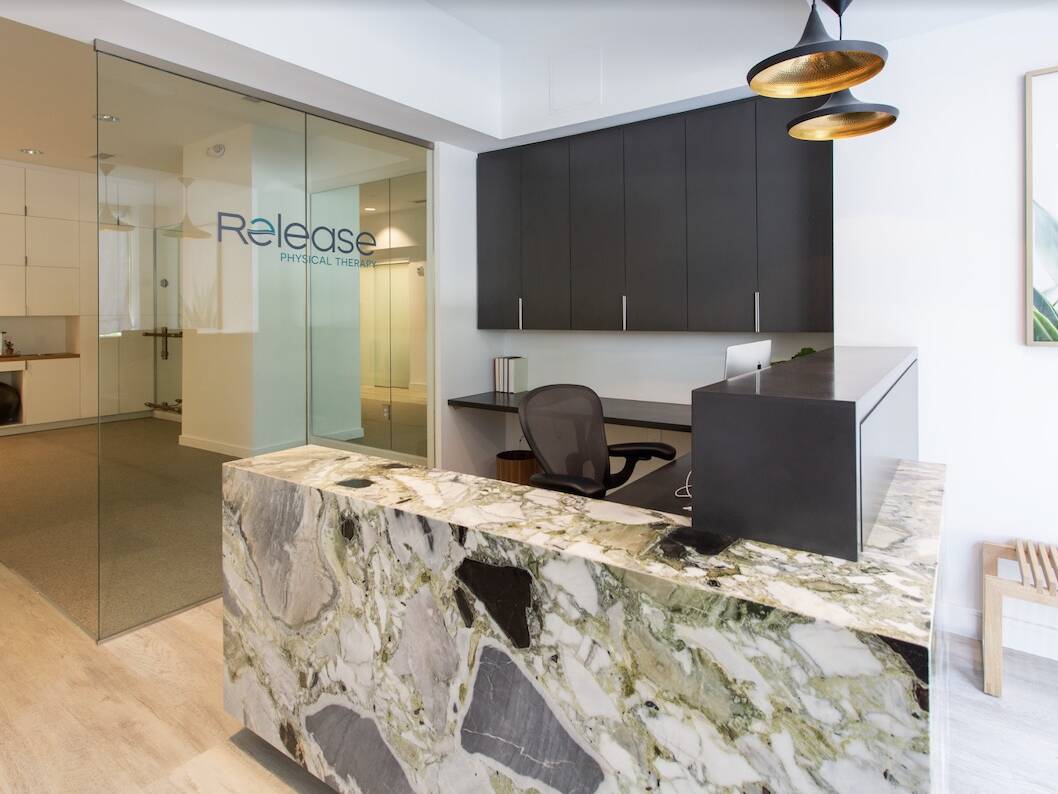
Our Approach
At Release Physical Therapy, we use evidence-based therapies to target the root cause of a condition, not just the symptoms. We offer a full range of treatments, including manual modalities, technology-assisted therapies, and both traditional and non-traditional techniques. We work one-on-one with our patients to develop an individualized treatment plan that meets their unique needs, conditions, wellness goals and fitness levels. Common conditions we treat include:
- Achilles tendonitis
- AC joint injury
- ankle sprains
- ankle fracture
- ACL injuries
- arthritis
- back injury
- back pain
- bursitis
- carpal tunnel syndrome
- cervical radiculopathy
- cervical strains
- chronic pelvic pain
- CL inuries
- compartment syndrome
- degenerative joint disease
- herniated disk
- de Quervain tenosynovitis
- fibromyalgia
- frozen shoulder
- golfer’s elbow
- headaches / migrains
- hip replacements
- ITB syndrome
- impingement syndrome
- knee replacement
- neck pain
- nerve entrapment
- osteoporosis
- osteoarthritis
- overuse injuries
- knee cap pain syndrome
- knee tendinitis
- plantar fasciitis
- rotator cuff tear
- runner's knee
- scoliosis
- sciatica
- shoulder tendinitis
- spinal stenosis
- spondylolisthesis
- shin splints
- tennis elbow
- thoracic outlet syndrome
- TMJ dysfunction
- wrist fracture
- and several others...
What Patients Are Saying
Physical therapy is about results. Too often, patients discontinue therapy because of a bad experience. At Release Physical Therapy, we are committed to providing the highest quality care through patient education, on-going clinician training, and personalized approach to treatment. We believe that everyone should live pain-free and healthy. But don’t take it from us, read what our patients have to say about their experience with Release Physical Therapy.
Our Physical Therapists
Release Physical Therapy staffs the top physical therapists in Washington, DC. Our experienced and highly trained physical therapists specialize in treating the outpatient orthopedic population, including sports therapy, chronic pain management, orthopedic/spinal therapy, pre/post-surgical therapy, as well as wellness and prevention. Our PTs utilize a wide range of therapies and technologies to deliver a personalized care plan. All of our physical therapists are accepting new patients.
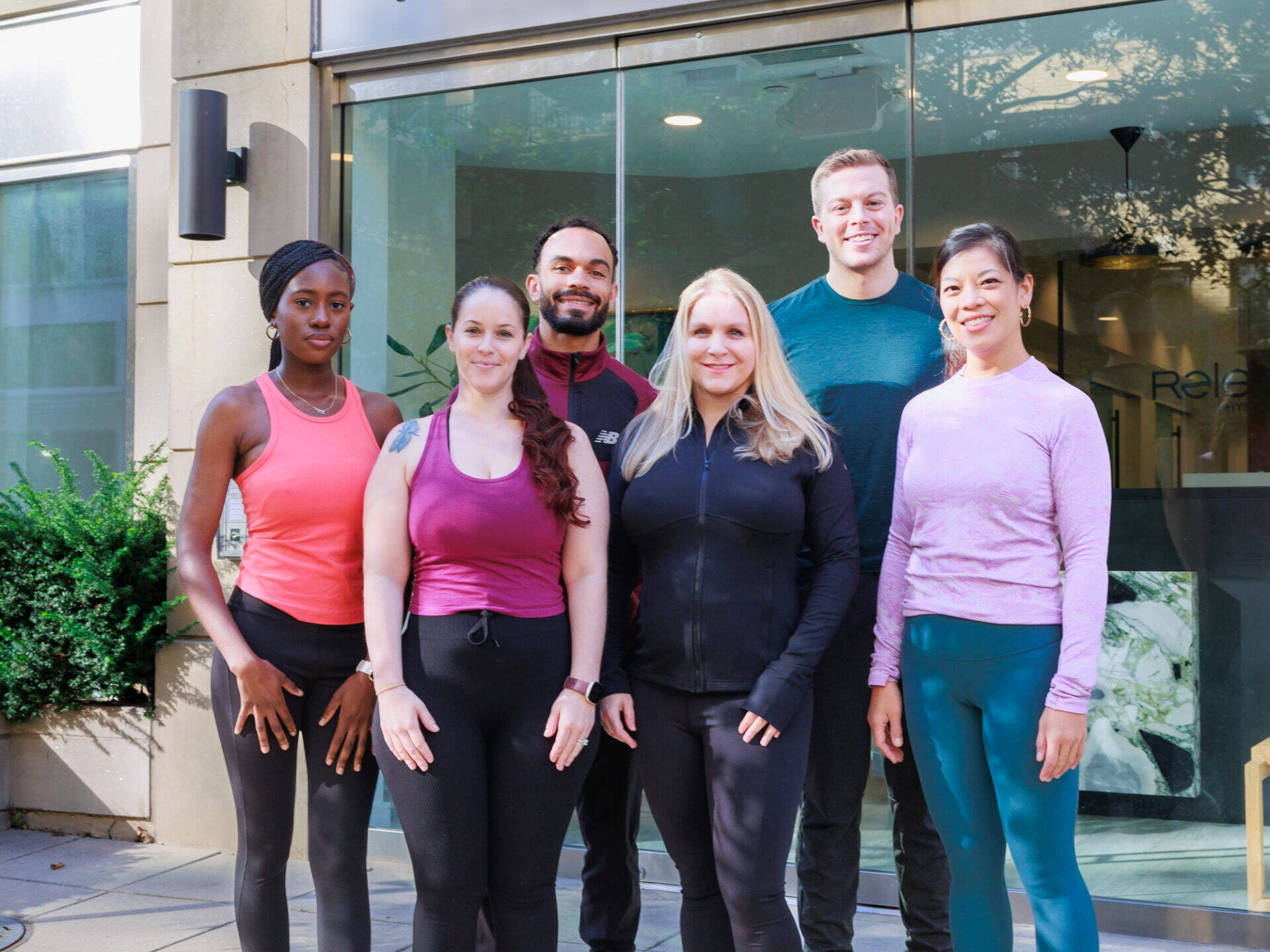
Dr. Cari Simon PT, DPT, CMTPT, ART
Owner & Physical Therapist, Release Physical Therapy Washington, D.C.
Dr. Cari Simon received her Doctorate degree in Physical Therapy from the University of Hartford. A former All-New England and All-State soccer player, she was part of the U.S. Women’s Soccer National Team pool, but ultimately decided to redirect her career in pursuit of her true passion: care. She is now one of the top physical therapists in Washington, DC. As one of the most highly regarded physical therapists in Washington, DC, Dr. Cari Simon’s treatment approach combines manual mobilization and manipulation techniques with individualized therapeutic exercise. She is a full body Active Release Technique (ART) provider. Additionally, Dr. Simon utilizes McConnell, athletic, and Kinesio Taping methods, as well as Trigger Point Dry Needle Therapy. When she is not helping her patients meet their physical goals, Dr. Simon enjoys networking with other physical therapists in Washington, DC, outdoor activities and spending time with her family.
Ethan Gramstad PT, DPT, CMTPT
Physical Therapist, Release Physical Therapy Washington, D.C.
Dr. Ethan Gramstad is the newest addition to the staff at Release Physical Therapy. A native of Virginia, he has recently relocated to Washington, DC following the last two years of practicing PT in Denver, Colorado. He received his Bachelor’s degree from the University of Virginia where he was a member of the UVA Men’s Rowing team for three years. It was that experience that ignited his interest in the science of exercise, as well as physiology and anatomy. He went on to obtain his Doctorate of Physical Therapy from Old Dominion University from Norfolk, Virginia in 2017.
Dr. Gramstad uses manual therapy and mobilization techniques to obtain optimal patient outcomes and places a high priority on establishing a strong patient-therapist relationship. He focuses on assisting his patients in meeting their physical goals and finds satisfaction in the application of individualized exercise programs, as well as dry needling to achieve success. He has previous experience in providing pre and post-operative therapy protocols and treating the outpatient orthopedic population. Besides his rowing days, Dr. Gramstad has personally participated in endurance sports; running Cross Country and multiple marathons and continues to maintain a devotion to a rigorous gym regimen.
Dr. Stephanie Lam PT, DPT, CMTPT
Physical Therapist, Release Physical Therapy Washington, D.C.
Dr. Stephanie Lam received her Doctorate of Physical Therapy from the School of Health Technology and Management at Stony Brook University, after attaining dual degrees in Biology and Psychology from the University of Virginia. She is highly experienced in several fields of adult orthopedics, including post-surgical recovery, acute sports injury rehabilitation, athletic performance improvement, and chronic pain management. She also has a passion for pediatrics and has treated kids of all ages for congenital and developmental issues.
Dr. Lam uses her patient’s individual goals to guide treatment, addressing her patient’s symptomatic impairments while considering their day-to-day ability to function and perform athletic and recreational activities. Dr. Lam incorporates manual therapy throughout her treatments, specializing in extensive deep soft tissue manipulation and mobilizations of the spine and peripheral joints, as well as dry needling.
Deborah Ajala PT, DPT, COMT, CMTPT
Physical Therapist, Release Physical Therapy Washington, D.C.
Dr. Deborah Ajala is an astute physical therapist who takes her time to get to know her patients in order to provide the best possible care. Dr. Ajala’s lifelong passion for caregiving led her to a career in physical therapy. She received a Bachelors degree in Health Sciences with a minor in Exercise Science and Wellness Management from the University of Sciences in Philadelphia, where she obtained a Doctorate in Physical Therapy thereafter. Dr. Ajala holds certifications in Orthopedic Manual Therapy (COMT) and Trigger Point Dry Needling (CMTPT). Her goal with each patient is to optimize their return to function.
Dr. Ajala previously worked at an Outpatient Physical Therapy Clinic in Maryland as a staff clinician. There, she served a diverse patient population treating a wide range of orthopedic conditions including sports medicine, pre/post operative rehabilitation, overuse injuries and several others.
In her free time, Dr. Ajala enjoys spending time with her family and friends, reading, and sports. She also enjoys exploring new DC neighborhoods and is a restaurant enthusiast.
Mia Smyser PT, DPT, COMT, CIDN
Physical Therapist, Pelvic Floor Therapist, Release Physical Therapy Tysons and Washington, D.C.
Dr. Mia Smyser is a native of the DMV. She received her Doctorate in Physical Therapy from the University of Miami, after receiving her Bachelors of Science in Exercise Science from the University of South Carolina. She thinks movement is of foundational importance and is dedicated to improving people’s mobility and function and helping them achieve their optimal physical well-being.
She is passionate about continuing to learn and grow in the profession. She is a Certified Orthopedic Manual Therapist (COMT), certified in Integrative Dry Needling and is continuing her coursework with Herman & Wallace as a pelvic health therapist.
Dr. Smyser previously worked at outpatient physical therapy clinics in Washington, DC and Falls Church, VA, treating a wide variety of conditions including sports medicine, pelvic health, pre/post-operative rehabilitation, and pediatrics, among others.
In her free time, she prioritizes spending time with her husband, son & dog; playing soccer and running; coaching HIIT and checking out new restaurants.
Paul Miller LMT
Massage Therapist, Release Physical Therapy Washington, D.C.
Paul Miller is a dedicated massage therapist with expertise in medical massage, deep tissue therapy, and myofascial release. Paul customizes each session to meet the unique needs of his clients, focusing on relieving tension, restoring mobility, and enhancing overall physical well-being.
Trained at the Northern Virginia School of Therapeutic Massage, Paul has also completed all three of Howard Rontal’s Myofascial Release courses, further refining his ability to address chronic pain and movement restrictions. His approach is rooted in the belief that targeted, intentional bodywork can be a transformative tool for recovery and long-term health.
Release Physical Therapy Treatments
Our experienced physical therapists have advanced training in outpatient orthopedic physical therapy. Our physical therapy services include sports therapy, injury rehabilitation, pre-surgical therapy, post-surgical therapy, chronic pain management, as well as wellness and prevention. Specialized treatments at Release Physical Therapy include:
Shockwave Therapy
A non-invasive medical treatment that utilizes acoustic waves to treat various musculoskeletal conditions and promote healing.
K-Laser Therapy
The use of specific wavelengths of light to improve healing time, pain reduction, increase circulation and decrease swelling.
Dry Needling Washington DC
Needle treatment that decreases pain, increases range of motion and improves strength by inactivating myofascial trigger points.
Active Release Technique in Washington, D.C.
Massage and movement-based technique that treats problems with muscles, tendons, ligaments, fascia and nerves.
Therapeutic Medical Massage
Reduces muscular pain and inflammation, relaxes overused muscles, improves posture and movement awareness, and enhances performance.
BFR Training Washington DC
Rehabilitation therapy and performance training technique using a personalized tourniquet system to reduce atrophy and increase strength.
Kineseo® Taping Method
Reduces muscular pain and inflammation, relaxes overused muscles, improves posture and movement awareness, and enhances performance.
Running Assessment Washington DC
Individualized analysis designed to identify strength, gait, and alignment imbalances to prevent injury and improve your current training program.
Functional Training
Exercise regimens that integrate multiple muscle groups, joints and the brain to assist in everyday movement, physical activities and athletics.
Graston Technique
Instrument-assisted soft tissue mobilization used to address soft tissue lesions and fascial restrictions resulting in improved patient outcomes.
Release Physical Therapy Services
At Release Physical Therapy, we treat you with our hands, not just machines. We offer a full range of manual therapies, as well as both traditional and non-traditional techniques for the best in comprehensive care. We work one-on-one with our patients to develop an individualized treatment plan that meets their unique needs, conditions, wellness goals and fitness levels.
Physical Therapy Treatment for Pelvic Floor Issues
At Release Physical Therapy, our experienced therapists conduct a thorough assessment to identify the underlying causes of your pelvic floor issues and create a personalized treatment plan to promote healing and alleviate the problems you’re experiencing.
Physical Therapy Treatment for Upper Back/Shoulder Pain
At Release Physical Therapy, our experienced therapists perform comprehensive assessments to see how they can help with your upper back pain. We then design individualized treatment plans aimed at promoting healing and relieving your specific issues.
Physical Therapy Treatment for Lower Back Pain
At Release Physical Therapy, our seasoned therapists perform comprehensive assessments to pinpoint the root causes of your lower back pain problems. We then design individualized treatment plans aimed at promoting healing and relieving your specific issues.
Physical Therapy Treatment for Knee Pain
At Release Physical Therapy, our seasoned therapists perform comprehensive assessments to pinpoint the root causes of your knee pain problems. We then design individualized treatment plans aimed at promoting healing and relieving your specific issues.
Physical Therapy Treatment for Ankle Pain
At Release Physical Therapy, our experienced therapists conduct thorough assessments to identify the underlying causes of your ankle discomfort. From there, we craft personalized treatment strategies tailored to foster healing and alleviate your unique concerns.
Physical Therapy Treatment for Tennis Elbow Pain
At Release Physical Therapy, our seasoned therapists perform comprehensive assessments to pinpoint the root causes of your tennis elbow pain problems. We then design individualized treatment plans aimed at promoting healing and relieving your specific issues.
Physical Therapy Treatment for Arthritis
At Release Physical Therapy, our expert therapists conduct thorough assessments to gain insight into your arthritis symptoms. With this understanding, we craft personalized treatment strategies aimed at promoting healing and addressing your unique requirements.
Release Physical Therapy Location & Hours
Visit us at our convenient West End Washington DC location. We pride ourselves on providing the highest level of care and convenience to our patients. Our appointment times flexible – let us know how we can best accommodate you.
Release Physical Therapy - Washington DC
2134 L St NW
Washington, DC 20037
Get Directions
Location Hours
Mon - Thurs: 6:00am - 8:00pm
Fri: 6:00am - 5:00pm
Sat - Sun: Closed
Now Accepting New Patients
Feel Your Very Best
Whether you’re an athlete that plays hard on the field, or a weekend warrior that plays hard in life, committing to a physical therapy program can help to keep you moving forward.
Latest Blog Posts
Follow us on Instagram!
Error: No feed with the ID 2 found.
Please go to the Instagram Feed settings page to create a feed.












